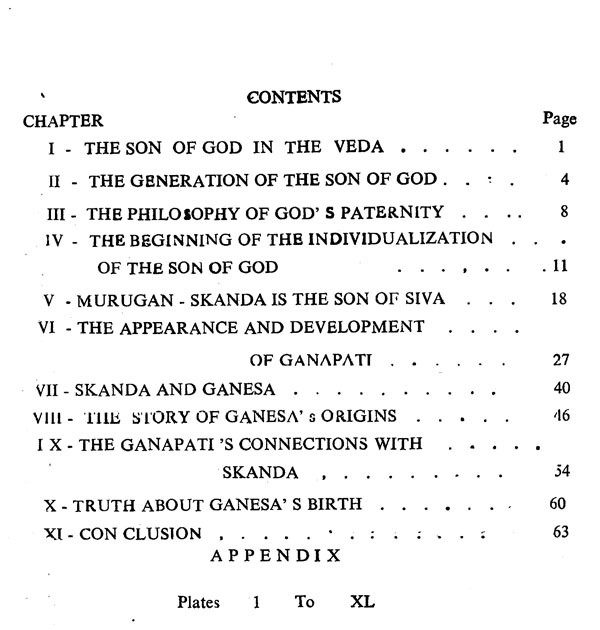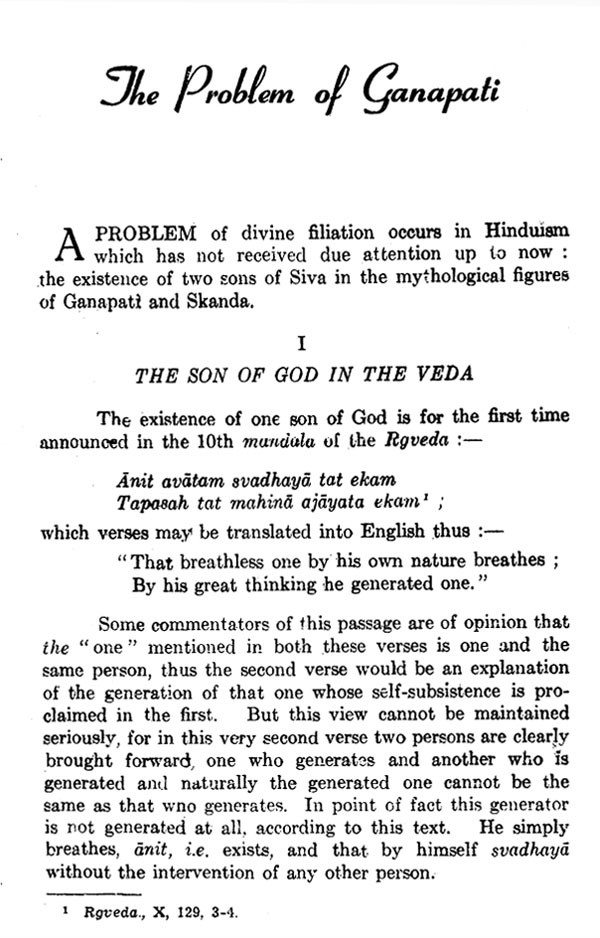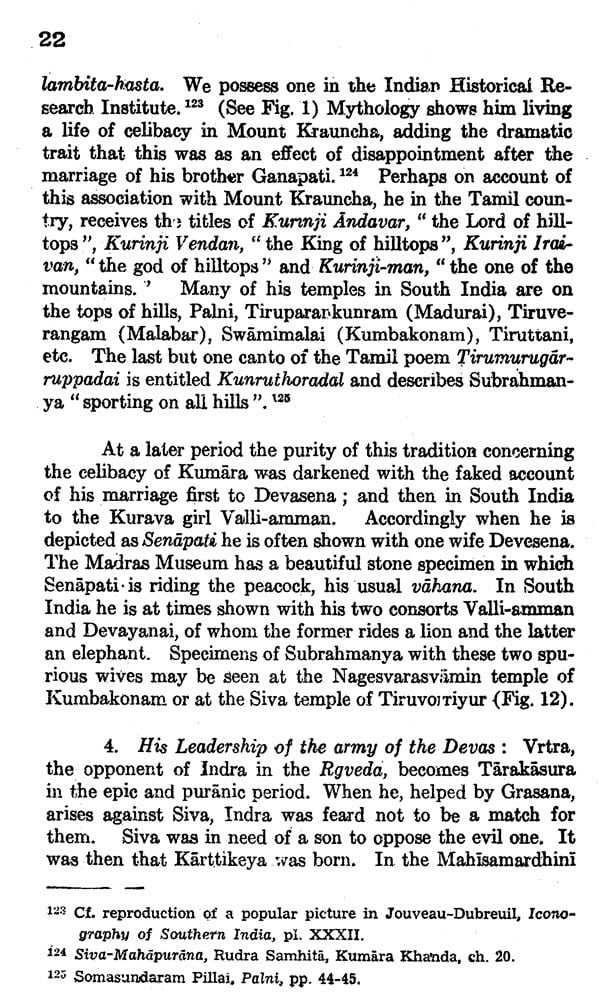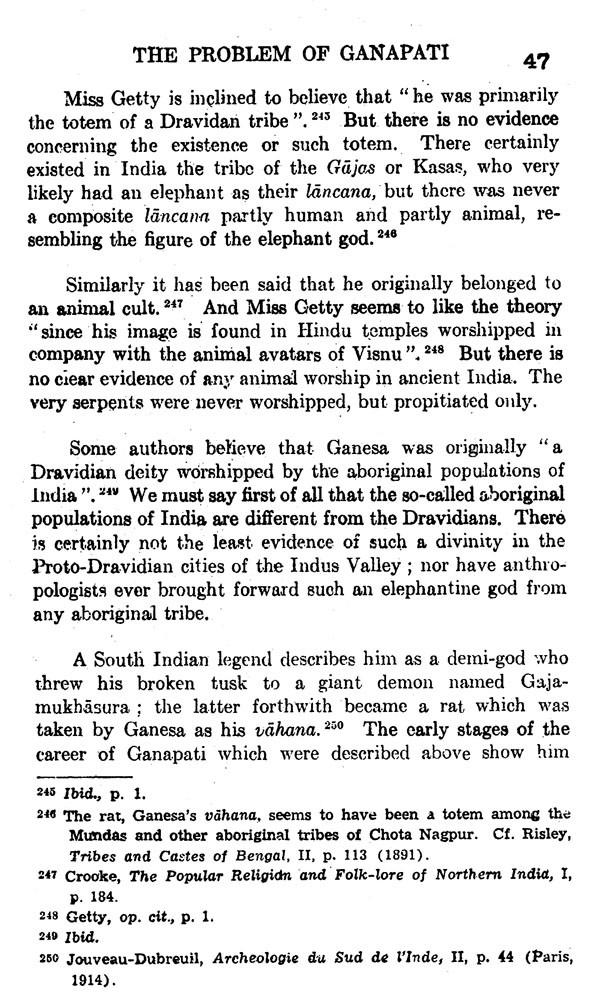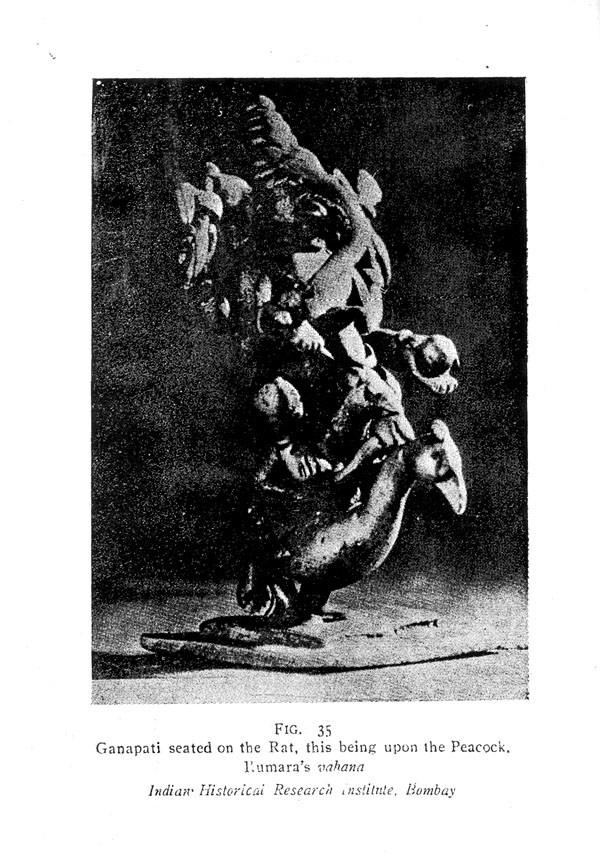
The Problem of Ganapati
Book Specification
| Item Code: | UBB198 |
| Author: | H. Heras |
| Publisher: | Prachya Vidya Bhawan, Varanasi |
| Language: | English |
| Edition: | 2022 |
| ISBN: | 9788195555505 |
| Pages: | 98 (Throughout B/w Illustrations) |
| Cover: | HARDCOVER |
| Other Details | 10.00 X 7.00 inch |
| Weight | 320 gm |
Book Description
The worship of Ganesa or Ganapati is not confined to India. His popularity to Nepal, Burma, Thailand, Tibet, Persia, Afghanistan, and Central Asia and crossed the seas to Java, Bali, Borneo, and Japan.
Ganesa is also called Siddhidatta, 'Bestower of success'. His adoration was taken over by the Buddhists, who claimed that a mystic mantra in praise of the Elephant-faced God, called the Ganapati-hrdya was disclosed to Ananda by the Buddha himself at Rajgriha. The mantra refers to Ganesa and contains a sadhana to be used in his onvocation.
Buddhist preachers carried the worship of Ganesa to China and Japan. He was known to these countries under two aspects Vinayaka, the single form, and Khanshi-t-Sien (Kangi-ten), the double form. He is worshiped in the form of Vajra- Vinayaka. In this form he carries a vajra in one of his hands.
Hence number is easily seen as the common element of all forms, the all pervading unity of all substance.
Other activities and achievements Heras was also the founder of the Bombay Historical Society and was also actively involved in the Indian Historical Records Commission, Indian History Congress and the International Congress of Historical Sciences. Being totally identified with the culture of the country he chose to become an Indian citizen as soon as possible after the independence of 1947. Among his many students is Dr. S.V. Sohoni, who studied under him in the early twentieth century.
The same admiration for Indian culture led him to encourage Christian artists to adopt Indian forms of art and symbols in order to express Christian themes. In the enthused over Angelo Fonseca, Olimpio Coleto Rodrigues, et al. In architecture he was personally involved in drawing up the plans of the cathedral of Belgaum. He conducted an exhibition on Indian Christian art for the Holy Year of 1950 in Rome. He is acknowledged to be the "Father of Christian Indian Art".
Ganesa is generally called the eldest son of Siva. This close connection between the two was responsible for the existence of a group of sects in ancient India, classed together under the title of Ganapatya,, which transferred the adoration of the devotees from Siva to Ganesa. According to Sankara Vijaya, a work claiming to be from the pen of one Anandatirtha, and to have been written in the 10th century, the Ganapatyas were divided into six sects-the worshippers of Maha Ganapati, Haridara-Ganapati, Uchchista-Ganapati, Navnita-Ganapati, Svarna-Ganapati, and Santana-Ganapati. These differed mainly in the form or title under which the god was adored, and in the forms of the mantras, or initiatory formulas, which were taught to the converts. How- ever, they all agreed in looking upon Ganesa, and not Siva, as the great First Cause, who alone exists eternally, and through whose maya, or illusion Brahma and the other gods are created.
The worship of Ganesa or Ganapati is not confined to India. His popularity extended to Nepal, Burma, Thailand, Tibet, Persia, Afghanistan, and Central Asia and crossed the seas to Java, Bali, Borneo, and Japan. A roughly carved image of Ganesa was discovered in West Java.
**Contents and Sample Pages**

